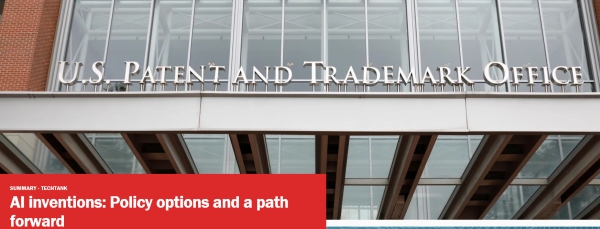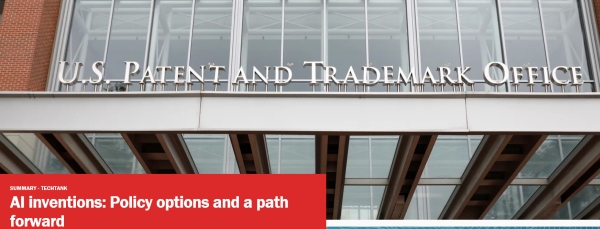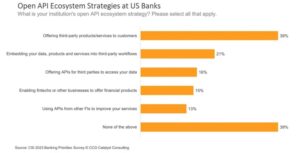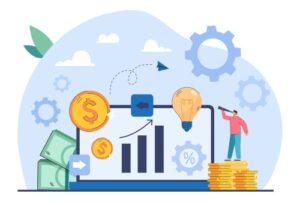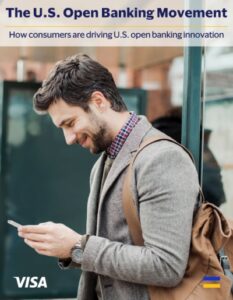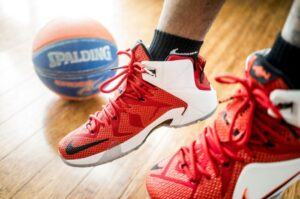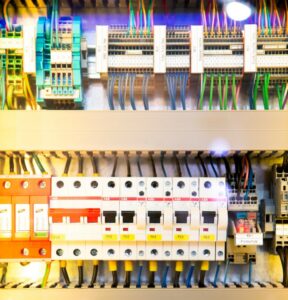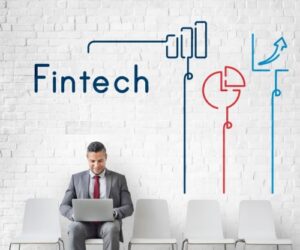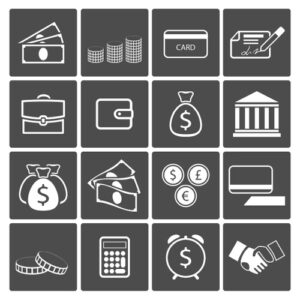AI Creations: Policy Options and a Pathway Forward
Brookings | | March 6, 2023
The question of how to handle AI inventions from a policy perspective is particularly timely given the extraordinary recent advances in AI.
- Request for Comments: In mid-February, the U.S. Patent and Trademark Office (PTO) released a “Request for Comments Regarding Artificial Intelligence and Inventorship.”
- Responses are due by May 15, 2023.
- The request, which is part of the PTO’s broader effort to engage in issues at the nexus of AI and innovation, invites responses on questions including “How is AI, including machine learning, currently being used in the invention creation process?”
- “If an AI system contributes to an invention at the same level as a human who would be considered a joint inventor, is the invention patentable under current patent laws?”
See: Generative AI: A Primer On Canadian AI and IP
- Policy Options: In a law review article published in late February in the Santa Clara High Technology Law Journal, I propose that AI inventions should be patentable under a broadened view of conception, with inventorship attributed to the people who use AI tools as extensions of their mind.
- Option 1: deem them unpatentable on the grounds that patenting them would require listing a non-human inventor in violation of the Patent Act.
- But that shouldn’t be the end of the story. After all, AI has enormous potential in relation to inventions, and U.S. patent policy should provide a mechanism to harness the power of AI to enhance innovation.
- Option 2: deem AI inventions patentable by revising the Patent Act to allow AI systems to be named as inventors or co-inventors.
- But this would require Congress to make a fundamental change to U.S. patent law. It would also raise a host of new challenges.
- Option 3: modify patent law to include an “invention made for hire” framework analogous to “work made for hire” in copyright.
- Under this approach, a company or university would be the inventor for AI inventions made by its AI systems.
- Option 2: deem AI inventions patentable under an expanded understanding of conception (the author believes this option is the best). Under this approach, people who use AI systems as extensions of their mind should be deemed to have conceived inventions generated through the use of those systems.
- Option 1: deem them unpatentable on the grounds that patenting them would require listing a non-human inventor in violation of the Patent Act.
See: The future relationship between AI and IP
- The bottom line is that if patent policy is to best promote innovation and economic competitiveness in the era of AI, it will need to incentivize investment in the use of AI as a means to expand the power of human creativity. Broadening our understanding of conception in patent law can achieve that goal.
Continue to the full article --> here
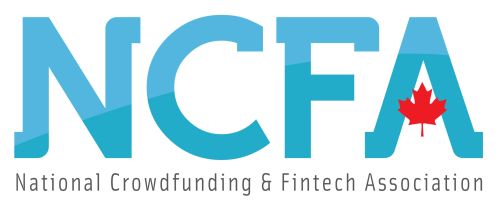 The National Crowdfunding & Fintech Association (NCFA Canada) is a financial innovation ecosystem that provides education, market intelligence, industry stewardship, networking and funding opportunities and services to thousands of community members and works closely with industry, government, partners and affiliates to create a vibrant and innovative fintech and funding industry in Canada. Decentralized and distributed, NCFA is engaged with global stakeholders and helps incubate projects and investment in fintech, alternative finance, crowdfunding, peer-to-peer finance, payments, digital assets and tokens, blockchain, cryptocurrency, regtech, and insurtech sectors. Join Canada's Fintech & Funding Community today FREE! Or become a contributing member and get perks. For more information, please visit: www.ncfacanada.org
The National Crowdfunding & Fintech Association (NCFA Canada) is a financial innovation ecosystem that provides education, market intelligence, industry stewardship, networking and funding opportunities and services to thousands of community members and works closely with industry, government, partners and affiliates to create a vibrant and innovative fintech and funding industry in Canada. Decentralized and distributed, NCFA is engaged with global stakeholders and helps incubate projects and investment in fintech, alternative finance, crowdfunding, peer-to-peer finance, payments, digital assets and tokens, blockchain, cryptocurrency, regtech, and insurtech sectors. Join Canada's Fintech & Funding Community today FREE! Or become a contributing member and get perks. For more information, please visit: www.ncfacanada.org
Related Posts
- SEO Powered Content & PR Distribution. Get Amplified Today.
- Platoblockchain. Web3 Metaverse Intelligence. Knowledge Amplified. Access Here.
- Source: https://ncfacanada.org/ai-creations-policy-options-and-a-pathway-forward/
- :is
- 1
- 2018
- 2023
- a
- Achieve
- Act
- advances
- affiliates
- After
- AI
- AI systems
- All
- alternative
- and
- approach
- ARE
- article
- artificial
- artificial intelligence
- AS
- Assets
- At
- author
- BE
- become
- being
- believes
- BEST
- between
- blockchain
- Bottom
- by
- cache
- CAN
- Canada
- Canadian
- challenges
- change
- Clara
- closely
- comments
- community
- company
- competitiveness
- conceived
- conception
- Congress
- considered
- copyright
- create
- creation
- creations
- creativity
- Crowdfunding
- cryptocurrency
- Current
- Currently
- decentralized
- digital
- Digital Assets
- distributed
- Economic
- ecosystem
- Education
- engage
- engaged
- enormous
- entry
- Era
- Ether (ETH)
- Expand
- expanded
- extensions
- extraordinary
- February
- finance
- financial
- fintech
- For
- Forward
- Framework
- from
- full
- fundamental
- funding
- future
- generated
- generative
- Generative AI
- get
- given
- Global
- goal
- Government
- handle
- Have
- helps
- High
- host
- How
- How To
- http
- HTTPS
- human
- i
- in
- incentivize
- include
- Including
- industry
- information
- Innovation
- innovative
- Insurtech
- Intelligence
- Invention
- inventions
- Inventors
- investment
- IP
- issues
- IT
- ITS
- Jan
- joint
- journal
- jpg
- Late
- Law
- Laws
- learning
- Level
- listing
- machine
- machine learning
- made
- make
- March
- Market
- max-width
- means
- mechanism
- member
- Members
- Meta
- mind
- modify
- more
- Named
- names
- Need
- networking
- New
- nexus
- of
- Office
- on
- opportunities
- Option
- Options
- part
- particularly
- partners
- patent
- payments
- peer to peer
- People
- perks
- perspective
- plato
- Plato Data Intelligence
- PlatoData
- please
- policy
- potential
- power
- primer
- process
- projects
- promote
- propose
- provide
- provides
- published
- question
- Questions
- raise
- recent
- regarding
- Regtech
- relation
- relationship
- released
- request
- require
- review
- s
- same
- Santa
- Sectors
- Services
- should
- stakeholders
- Stewardship
- Story
- system
- Systems
- Technology
- that
- The
- The Future
- their
- Them
- thousands
- Through
- Title
- to
- today
- Tokens
- tools
- trademark
- u.s.
- under
- understanding
- university
- us
- US Patent and Trademark Office
- use
- USPTO
- vibrant
- View
- VIOLATION
- Visit
- which
- WHO
- will
- with
- works
- would
- zephyrnet

